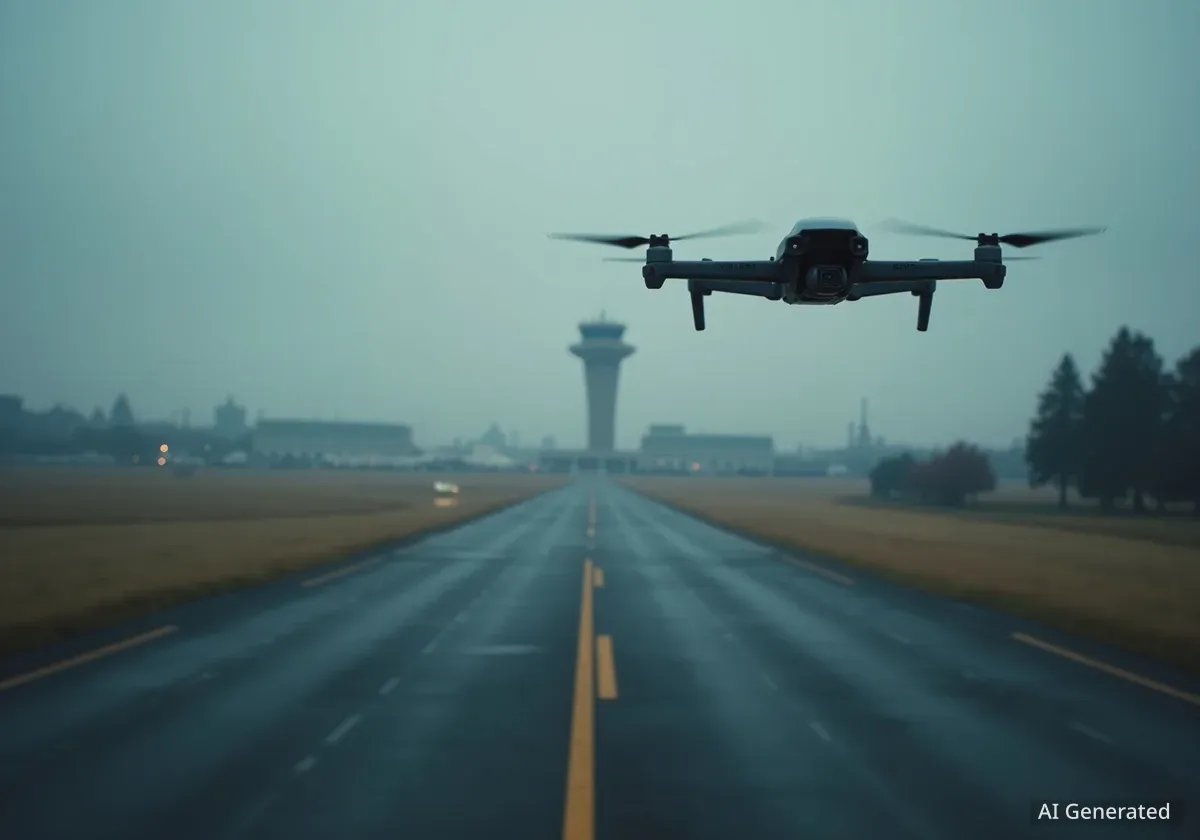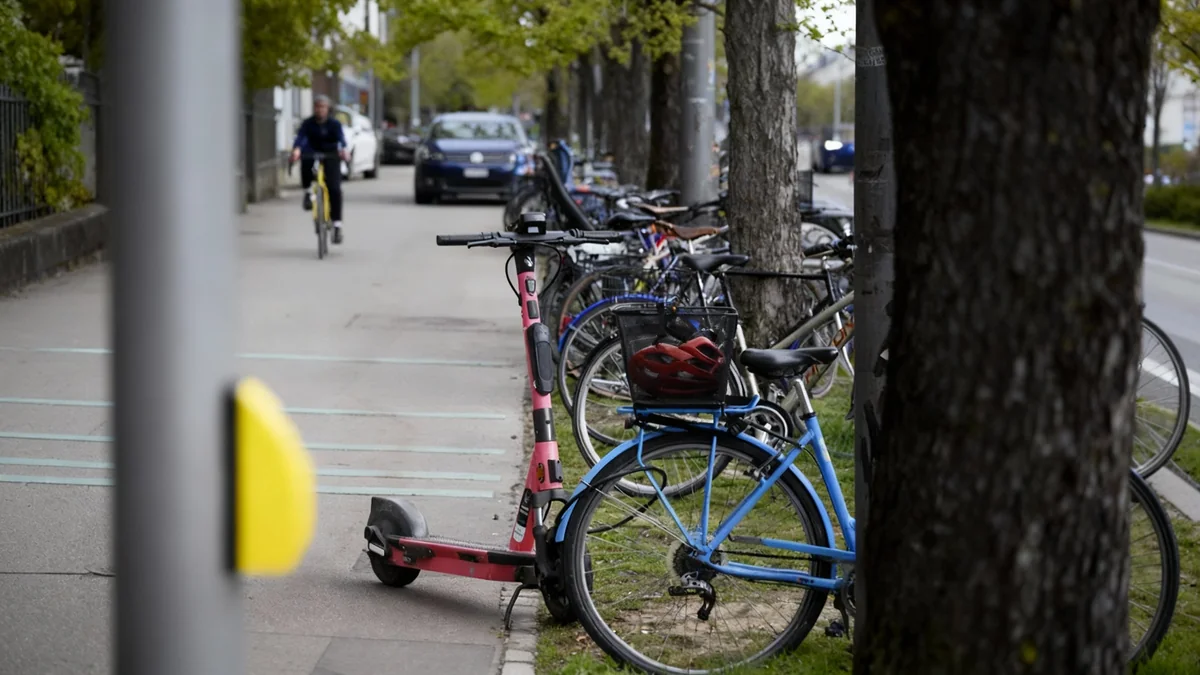Swiss airports, including the critical Bern-Belp facility used by government officials, are operating without adequate drone detection and defense systems, according to security experts. This vulnerability comes as the Federal Office of Civil Aviation (FOCA) reports 50 critical drone incidents in Swiss airspace this year, raising concerns about the potential for significant disruption or harm to national infrastructure.
Key Takeaways
- Major Swiss airports, including Bern-Belp, lack modern systems to detect and counter unauthorized drones.
- Switzerland's Federal Office of Civil Aviation (FOCA) has already registered 50 critical drone incidents in the current year.
- Experts are warning that a drone-related attack could cause "devastating damage" to aviation and national security.
- The issue reflects a growing trend of suspicious drone activity over sensitive infrastructure across Northern Europe.
A Rising European Security Concern
Recent months have seen a notable increase in unauthorized drone flights over critical infrastructure in Northern Europe. These incidents have put aviation authorities on high alert, prompting a re-evaluation of security protocols at airports, which are considered particularly vulnerable targets.
These unidentified drones often conduct surveillance or test response times, but the potential for more malicious use is a primary concern for security agencies. The ease of acquiring high-capability drones has lowered the barrier for individuals or groups looking to disrupt major transportation hubs.
The European Union Aviation Safety Agency (EASA) has been actively developing regulations to manage drone traffic, but the implementation of effective countermeasures at the national level remains a complex challenge. The situation in Switzerland highlights a gap between recognizing the threat and deploying the necessary technology to mitigate it.
Switzerland's Airspace Under Pressure
The threat is not abstract in Switzerland. According to the Federal Office of Civil Aviation, 50 critical drone incidents have been officially recorded so far this year. These events involve drones flying too close to aircraft during takeoff or landing, operating in restricted zones, or otherwise posing a direct risk to aviation safety.
A critical incident is defined as a situation where a drone's proximity to a manned aircraft creates a collision hazard, forcing pilots to take evasive action or creating a dangerous operational environment. Each of these 50 instances represents a serious breach of aviation safety regulations.
By the Numbers: Drone Incidents
The 50 critical incidents logged by FOCA in 2025 underscore a growing problem. This figure represents only the officially reported and verified cases, suggesting the actual number of unauthorized flights near airports could be significantly higher.
Despite this clear and present danger, the response has been slow. Only a handful of Switzerland's airports are equipped with modern, comprehensive drone detection systems capable of identifying, tracking, and neutralizing a potential threat. The majority remain exposed, relying on visual sightings and traditional security measures that are often ineffective against small, fast-moving drones.
Bern-Belp: A High-Stakes Vulnerability
The situation at Bern-Belp Airport is particularly alarming due to its unique role. The airport not only serves commercial flights but is also the primary hub for the Swiss government's air fleet, including the jets used by Federal Councillors and for transporting visiting heads of state.
Despite its strategic importance, Bern-Belp currently has no dedicated system for drone detection. This means an unauthorized drone could approach the airfield, gather intelligence, or even attempt to disrupt operations with little chance of being detected until it is too late.
Experts warn that the consequences of an incident at Bern-Belp could range from major flight disruptions to a serious security breach involving high-level government officials. The lack of protective measures at such a sensitive location is a significant national security oversight.
What is Drone Detection Technology?
Modern anti-drone systems use a multi-layered approach to protect sensitive areas. This can include:
- Radar: To detect the physical presence of small objects in the airspace.
- Radio Frequency (RF) Scanners: To identify the communication signals between a drone and its operator.
- Electro-Optical and Infrared Cameras: For visual confirmation and tracking of a detected threat.
- Acoustic Sensors: To pick up the sound of drone propellers.
Once a drone is detected, countermeasures can range from jamming its control signal to physically capturing it with nets or other interceptor drones.
Expert Warnings of "Devastating Damage"
Aviation security specialists have been vocal about the potential fallout from the country's current lack of preparedness. They argue that a coordinated drone attack, even with commercially available technology, could inflict "devastating damage" on Swiss aviation.
"An attacker could cause chaos with relatively simple means. The goal might not be physical destruction but creating enough disruption to ground all air traffic, costing the economy millions and eroding public trust in aviation security," one security analyst noted.
The potential scenarios are varied and concerning. A single drone could force an airport shutdown for hours, leading to widespread cancellations and economic loss. Multiple drones could be used in a swarm to overwhelm air traffic control or create a direct physical threat to an aircraft during a critical phase of flight like landing or takeoff.
The call to action from experts is clear: Switzerland must invest in and deploy modern drone defense technologies across its key airports immediately. They argue that waiting for a major incident to occur is a reactive and dangerous strategy. Proactive investment is needed to protect the country's critical infrastructure, ensure the safety of the travelling public, and safeguard national security operations.




